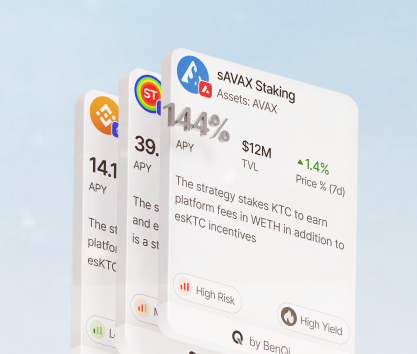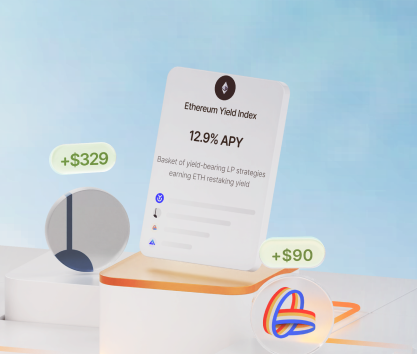A standard US high-yield bank deposit will produce around 5% APY which is considered quite a lot by many conservative investors. While low interest rates on savings accounts are not a bad thing at all, catching up to rising prices is becoming the main concern for most investors. The same 5% APY does not hit the same when inflation has been above 3% for over 3 years peaking at 9.1% in June 2021.
The decentralized finance (DeFi) ecosystem provides an excellent solution to the grievances of contemporary investors seeking higher returns capable of reliably beating inflation. The problem is not limited to the US soil. The discrepancy between the cost of living and real wages is growing everywhere with fiat losing value in EU, Turkey, China, and, now, even Japan. People are looking at the DeFi sector with growing hope and enthusiasm as yields here are quite high.
Exploring DeFI: highest yield numbers!
The hunt for the biggest returns does not start on a centralized exchange. Advanced decentralized finance protocols serve as gates to the world of exorbitant interest rates. APRs range from 0.1% to over 253,000% (i.e., King Sugar Glider project on Solana) with risks also wildly fluctuating depending on the number of yield farming layers and leverage.
With close to zero regulation and complete freedom to do whatever you want, the sector of decentralized finance is like the wildest of Wild Wests. It is possible to find gold on over 11,000 DeFi protocols’ pools listed on DeFiLama and other similar aggregators. Unfortunately, many projects are memecoins, scams, rug pulls, or simply protocols with a weak foundation.
Realistic yields are comparatively modest and usually come to something around 3.5% — 7% depending on the platform and market conditions. If you are ready to take on some additional risk for greater rewards, another layer of staking is a reasonable option. For example, you can stake $ETH on LIDO for 3.25% and receive stETH which can be further staked on something like Sommelier Finance for an additional 11.37% APY (in the TurboSTETH pool) to get an outstanding 14.62% APY with auto-compounding.
It is important to stay level-headed while looking at these numbers that seem out of this world. Higher APYs are always associated with risks with each next layer of staking exposing your portfolio harder than the previous. The main quest of any investor venturing into the world of crypto is to find the right balance and create a robust portfolio that can outpace traditional high-yield accounts in banks and other asset classes.
Before we discuss the best ways to achieve the highest returns in DeFi, let’s crack some numbers and look at the landscape of this sector in 2024. All numbers below are as of the time of writing.
- The average 30-day APY on DeFi protocols with over $10 million in TVL was 14.62% meaning that returns are considerably higher compared to average bank deposits.
- The leading blockchain for yield farming is still Ethereum with over $63 billion locked on platforms with over $10 million in TVL representing a 78.7% share of the industry.
- Top performers are LIDO ($24.57 billion TVL and 2.75% APY), ether.fi ($4.03 billion/3.88%), and Rocket Pool ($3.11 billion/3.33%).
- Notable high yield DeFi investments are Hamster Kombat during its pre-market period with 533% 30-day average APY and OVN (Overnight Finance) with its leveraged product generating 933%.
The sector is incredibly diverse. It offers a whole cohort of various investment avenues for crypto enthusiasts interested in building a strong portfolio. Whether you need conservative options to focus on loss aversion or plan to maximize potential returns by focusing on risky projects with unimaginably high APYs, the DeFi industry has something to offer.
Making the best yield farming strategies
Finding the right combination of protocols that will, on paper, produce incredibly big returns is not a tough challenge. You only need to use metrics from on-chain data aggregators like CoinGecko or DeFiLama. The real trick is finding effective ways to reduce risks and prevent losses. You should also be aware of investment costs associated with DeFi income strategies.
Building a strategy is a sophisticated process that requires laying some groundwork before entering positions. Let’s discuss some important factors that must be considered by any investor.
Paying for yield farming
Despite what many newcomers think, this type of investment is far from free. You will need to account for a variety of costs when calculating potential returns. Below are several factors that may hinder the overall performance of your portfolio:
- Gas fees. The most obvious cost is the price of transactions. While a 0.1% fee for entering or exiting a position seems small, some pools do automatic rebalancing of positions forcing investors to pay network commissions several times during the staking period. Many investors have to test everything manually before they can calculate actual profits after paying for gas.
- Impermanent loss. It occurs when the prices of locked assets drop. It can be mitigated in theory, but the data collected by Cornell University says that 43% of all Uniswap users lose money due to IL. Unfortunately, predicting it is just as hard as forecasting the market. Technical analysis and social media sentiment can be good indicators but you have to absorb impermanent loss as an investment cost and be ready to include it in your estimations.
- Interest payments. Many investors decide to engage in leveraged liquidity mining by taking on debt in tokens that can be staked. This approach is extremely dangerous as it exposes you to two different types of risks which have to be dealt with separately. Before you start finding ways to protect the portfolio from various dangers of the market, you have to consider interest payments (borrow APR/APY) that must be subtracted from the returns generated by staked tokens.
- Subscriptions and instruments. Paying for premium features on various platforms is also a significant chunk of money. Experienced investors want to earn money conveniently and enjoy advanced functionality on top of having access to the most relevant market data. These things cost money and they can significantly hit your bottom line. You can also pay for insurance further eating away from potential earnings.
All these costs have to be covered by yields that have to beat high interest rates from bank deposits and other alternatives.
DeFi yield optimization
Considering the price of investing is just one aspect of designing a strategy. Another side of the coin is searching for protocols and pools that produce adequate returns while having respectable TVL, confidence, and other important metrics.
Below are several examples of target pools that have different metrics which must be correctly interpreted by investors:
- Aave V3 has a low APY (0.12%) yet enjoys higher confidence from users due to its focus on lending and borrowing. In general, lending platforms have lower APYs and high investor confidence.
- MakerDAO is one of the best liquid staking protocols for crypto investors with a solid 7.17% 30-day average APY yet the level of investor confidence is low.
- The same Aave is often cited as a highly reliable protocol yet its image was tarnished due to the discovered Curve.fi exploit in April 2024.
- King Sugar Glider on Solana promises 253,000% APY with a laughable $53,000 TVL and not a single investor from the outside.
When thinking about optimizing yields, it is hugely important to remember various factors affecting potential earnings. For example, you can stake ETH to get WETH (wrapped) to restake it in RENZO on UniSwap V3 for 30.74% APY and receive REZ tokens as a reward. The theory says that the overall gain should be close to over 34% (plus APY earned on the mainnet token) but practice shows that earnings a much lower since the value of the REZ token has been only going since its launch.
Searching for the right combination of pools to achieve the highest APY without compromising the safety of holdings too much is the main priority for any investor.
The good news is that you have literally thousands of pools to choose from and over a hundred different protocols offering diverse earning methods. Separating the wheat from the chaff in this chaos may look like an insurmountable task, but we have a couple of interesting projects that should be prioritized. We pick them for high investor confidence, respectable metrics, and brand recognition.
LIDO — an undisputed behemoth
This platform is a great place to acquire stETH tokens to invest them in a variety of other projects including Balancer, 1inch, Aave, Curve, and many others. The advertised TVL level is $25.7 billion with 3.9% APY which is quite close to reality. One of the problems for the protocol is that it became too big controlling over 33% of all staked ETH at some point. It is the biggest platform by TVL and the most popular destination for many Ethereum users.
Advantages:
- Incredibly high TVL and consistent APR.
- One of the most recognized brands in the industry.
- Allows stETH reinvestment and an easy integration in the Ethereum ecosystem for newcomers.
Aave — shaky yet consistent
As one of the most reliable lending platforms, it has been growing in popularity until the Curve exploit completely halted its expansion. Security concerns have since been addressed and the overall level of investor confidence seems high. The problem is the drop of V3 Ethereum TVL by 32% from $4.7 billion in May 2024 to $3.2 billion in August. Other pools are doing better. The recovery may take quite some time.
Low APR numbers are offset by relatively low risks and consistent payouts. Aave is also quite flexible allowing users to stake a wide range of wrapped tokens including WBTC, WSTETH, and WAVAX.
Advantages:
- Investors have access to a wide range of wrapped and staked assets.
- Average 30-day APY across pools was close to 2.66% as of the time of writing.
- Allows users to participate in governance and borrow against collateral.
DeDust — one of top yield DeFi protocols
Deployed on the TON chain, it is one of the most interesting projects with extremely high APY (56.35% 30-day mean average) and sizeable TON rewards APR (35.86%) making it a lucrative target for many investors who are interested in The Open Network Dapps. DeDust is a decentralized exchange with an automatic market maker. It offers high returns in exchange for liquidity provision.
Advantages:
- Incredibly high rewards APY.
- 2.05% base APY without rewards which is quite solid.
- Over $250 million in TVL across 61 tracked pools.
Exploring top DeFi yield opportunities
Contemporary crypto investors can indulge in a plethora of investment avenues that were not even dreamt of by capital holders just two decades ago. One can focus on compounding interest rates and grow a position comprised of just one pool or start stacking them on top of each other by staking mainnet coins, wrapped/staked tokens, and trading rewards issued in other types of digital assets.
The only thing we must remember at all times is that staking in DeFi projects comes with elevated risk levels. It is hugely important to focus on analyzing potential dangers, reducing costs, and optimizing yields as well as possible.









